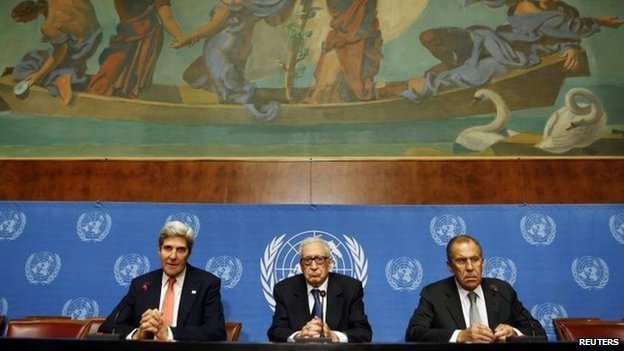Asia’s economic and security order is in a state of flux. The regional power balance in Asia has shifted profoundly in the last decade, exemplified by the unprecedented economic and military ascendency of China and the slow and steady rise of India. The 21st century has been referred to as the ‘Asian Century’, wherein Asia’s growth is beginning to challenge the dominance of Western powers, particularly that of the world’s sole superpower, the U.S. Under the leadership of President Xi Jinping, China seems determined to reorient the Asian order to promote its interests by pulling its neighbours into a Chinese-centric orbit of power and influence. Sandwiched between the U.S. and China, India is slowly but steadily charting its own rise, albeit from a lower economic base. Although a far weaker industrial power when compared to China, India aspires to become a great power over the next three decades by leveraging its favourable demographic profile and a growing middle class. Economic forecasters predict that in the absence of any serious impediments to growth, India could become the third largest economic power in the world by 2050, with China and the U.S. occupying first and second respectively. Will these two Asian powers with a history of conflict going back to a border war in 1962, which India lost, rise peacefully in this ‘Asian Century’?’
Bilateral Issues
India and China face a slew of contentious bilateral issues that bedevil their relationship. To start with, the two countries have unsettled border disputes in India’s North East that are not easy to resolve; India accuses China of occupying a part of the Indian administered part of Kashmir, Aksai Chin. Frequent Chinese incursions into disputed areas of the border have continuously stoked tensions. On top of this, India and China do not see eye to eye on the funding architecture that drives infrastructure development in the Indian Ocean Region. Simultaneously, both China and India are engaged in a fierce competition for leasing military bases in the Indian Ocean littoral states. Tensions aren’t helped with India being one of the few countries that is ambivalent about China’s Belt and Road Initiative (BRI) and refused to attend the BRI Summit last year. Although India lags China in infrastructure development, it has been reluctant to accept Chinese infrastructure development funding, which it claims is predatory and in conflict with prevailing international lending norms and practices. India and China have grown their commercial relationship to more than $85 Billion, but India faces a widening trade deficit. Pakistan, India’s archrival in South Asia and one of China’s closest allies, has also been a major factor in the relations between the two countries. Finally, last year India and China were engaged in a tense standoff in the mountainous region of Doklam, a disputed land area claimed both by China and Bhutan, India’s staunchest friend and ally in South Asia. Although India was not directly involved in the dispute between Bhutan and China, the country intervened as it felt Chinese road construction so close to its own Trijunction area was serious enough to threaten its security. With all these factors at play, it is safe to say that India and China’s bilateral relationship is a contentious one.
How India Views China’s Rise
Ever since losing the aforementioned border war in 1962, the Indian elite has viewed China with suspicion and circumspection. The normalization of ties with China only began in the early 1990s, after China’s economic transformation under the leadership of Chairman Deng Xiaoping. China’s rise presented both challenges and opportunities for India. China’s economic rise created opportunities for establishing trade and commercial links, cushioning the bilateral tensions emanating from the land border disputes between the two countries. On the other hand, China’s rapid military modernization, global expansion of its commercial and military interests, and the insatiable appetite for constructing ports, energy and other infrastructure projects in India’s own region, placed constraints on India’s own power. Balancing against China’s economic and military engagements is one of India’s main preoccupations in South Asia. China has also blocked India’s permanent membership to the United Nations Security Council and its membership to the Nuclear Suppliers Group (NSG), which governs global nuclear commerce. Through its ‘Act East’ policy India has sought deeper engagement with South-East Asia, a region in which it has deep religious and civilizational links, but it still greatly lags China in exerting a geopolitical influence. Unable to match China’s economic and military might, India seeks an uneasy accommodation with China in a mercurial geopolitical environment.
How China Views India’s Rise
China perceives India to be a poor country, a pesky democracy with a creaky infrastructure and a moribund industrial base. It does not view India as a significant military threat since its defence modernization lags theirs. That being said, China still values the durability of its growing economic engagements with India and the attraction of India’s soft power. However, India’s rapidly growing economic and military ties with the U.S. in recent years, the U.S.-India nuclear deal, and India’s designation as a major defence partner of the U.S. are major causes for concern among Chinese analysts. Moreover, India’s participation in naval exercises in the Indian Ocean as part of the so called ‘quad’ involving Japan, the United States, and Australia is viewed in China as participation in an anti-China alliance. China is also wary of India’s close cooperation with the U.S.in strategic sectors, including cyber security and space. To counter India’s rise China has sought to rapidly boost economic opportunities and defence cooperation with India’s neighbours through infrastructure development, including strategic ports and arms sales.
Conclusion
India and China are two of the most populous countries in the world. The rivalry between India and China will play out along three axes: competition, cooperation and conflict. In the maritime domain, the two countries will continue to compete aggressively for domination of the Indian Ocean. Conversely, India and China have also shown that they are capable of cooperating on major global governance challenges such as climate change. At a recent summit in Wuhan, China, Prime Minister Modi and President Xi signalled for a thaw in tense relations and a boost in cooperation between the two countries. While areas of cooperation could possibly deepen in the future, the potential for conflict should not be brushed aside. Relations could worsen if China continues to deploy aggressive military postures against India to coerce it into bandwagoning with its policies. A flare up across borders could also increase tension. Other major areas of divergence include their conflicting stances on space security, the use of cyber power, and Internet governance. China seeks to be a global superpower and a long-term challenger to U.S. preponderance in Asia and the world. India has no such ambitions since it will continue to lag China in economic and military power. The power differential will continue to widen the gap between the two states. How the two sides continue to manage the rough-edged contours of their relationship, while building patterns of cooperative behaviour, will shape the future of a new Asian order.
Photo: Men with chai, via Pexels. Public Domain.
Disclaimer: Any views or opinions expressed in articles are solely those of the authors
and do not necessarily represent the views of the NATO Association of Canada.




